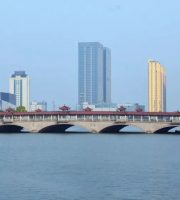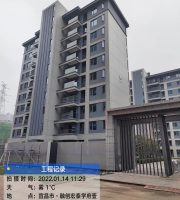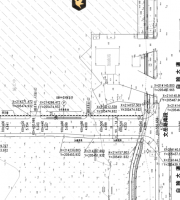Garden waterscape classification natural waterscape makes full use of the waterscape resources of natural rivers, rivers and lakes around the project to carry out planning and layout, so that more residents or tourists can enjoy the waterscape, which is carried out around the natural waterscape, and fully takes advantage of the light of the external natural rivers and rivers to enhance the waterscape effect.
When formulating the construction scheme of garden waterscape waterproofing, it also needs to refer to the actual environmental conditions and needs* Statement: this picture and text comes from the Internet, and the copyright belongs to the original author.
Construction precautions: when constructing on the original soil layer, geological foundation survey is very important.
Construction precautions: first of all, ensure that the roof of the building structure is waterproof and does not leak.
The pouring shall be completed at one time and the curing period of two weeks shall be ensured.
The scale of waterscape varies from large to small.
Artificial waterscape creates all kinds of artificial waterscape in the landscape area, creating a specific waterscape effect in the waterless land.
Compared with the typical practice of rigid waterproofing, the waterproof construction scheme has advantages and disadvantages: rigid waterproofing has a waterproof layer on the basis of rigid waterproofing, and the waterproof effect is good.
If the requirements for water seepage prevention are not high, flexible waterproofing can be considered.
The flexible waterproof interface is easy to leak, so it needs to be handled well.
Construct according to the corresponding specifications to ensure the quality of cement.
If the pool is too long and wide, expansion joints should be set.
The rigid lap joint cannot resist the original soil layer, and the shear force caused by the uneven settlement of the artificial lake may cause fatal damage to the whole waterproof system.
Typical practice of flexible waterproof: advantages and disadvantages: there will be no obvious expansion problem.
The combination of natural and artificial waterscape introduces the surrounding natural waterscape into the landscape area, and connects with the artificial water body excavated in the landscape area to form living water, making it more natural.
Some take waterscape as the main body, and some take waterscape as ornament.
Common usage: rigid waterproofing is widely used in residential courtyards, underground garages, and roof pools.
If there is a fracture layer or other uneven settlement, settlement joints should be set according to the location.
Economy: the construction cost is low, which is more economical.
Economy: if the structural waterproof layer is set separately, the structural cost is relatively high.
The above is the construction scheme of rigid waterproofing and flexible waterproofing, as well as the comparison of advantages and disadvantages.
Prepared by: Yang Baomin, Liu ronghua checked by: Peng Liyun edited by: Yang Baomin, Liu ronghua..
If copyright is involved, please contact to delete the text.
In the later management, it should be ensured that the waterproof membrane will not be damaged artificially.
Common usage: it is more suitable for the operation of irregular sites and large-area artificial lakes.
Puncture resistance and aging resistance are not as good as rigid materials, which are easy to age and have short service life.
Flexible waterproof materials have high tensile strength, large elongation, light weight and convenient construction, but they have strict requirements for operation technology.
Rigid waterproof is easy to crack and water seepage due to its small temperature difference strain capacity.




